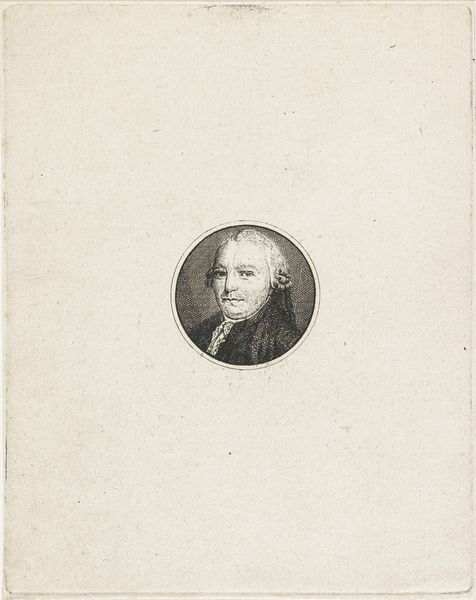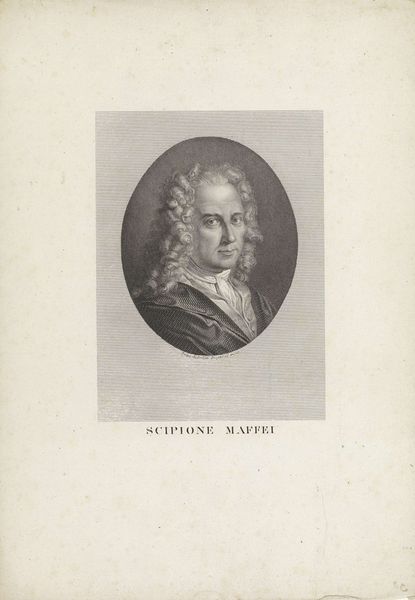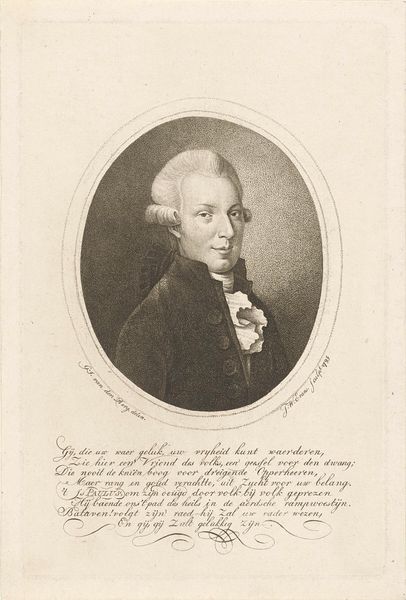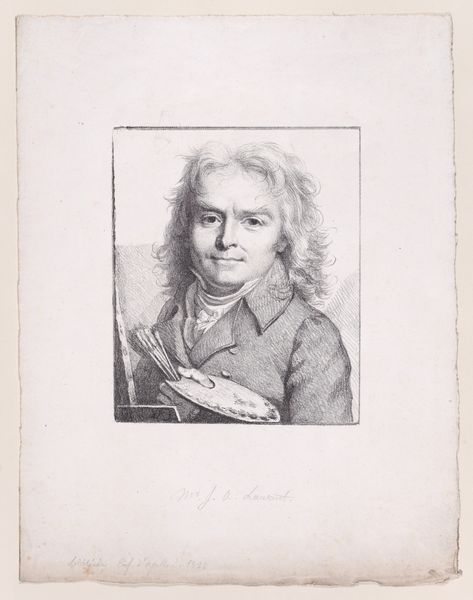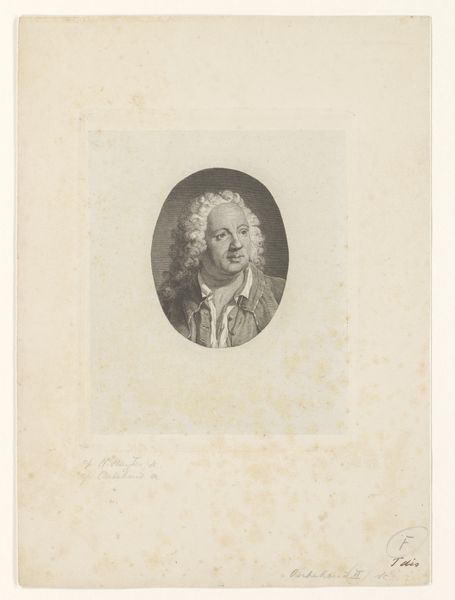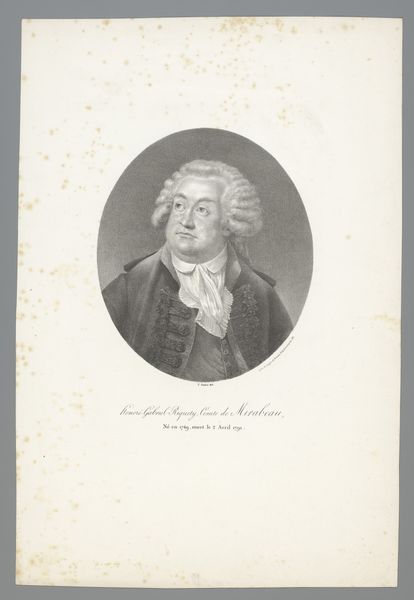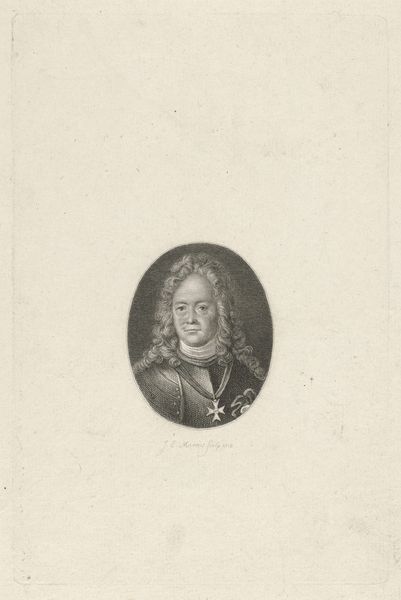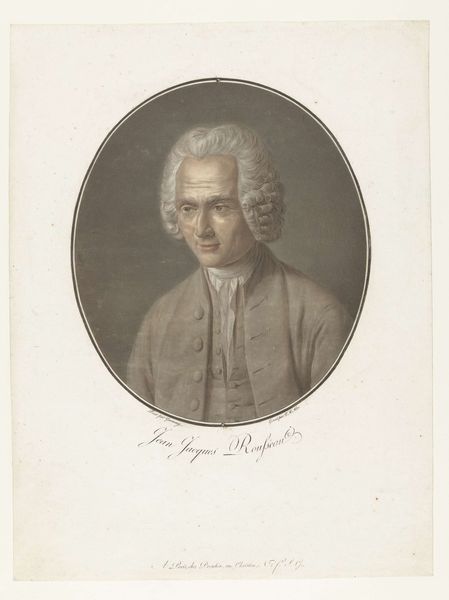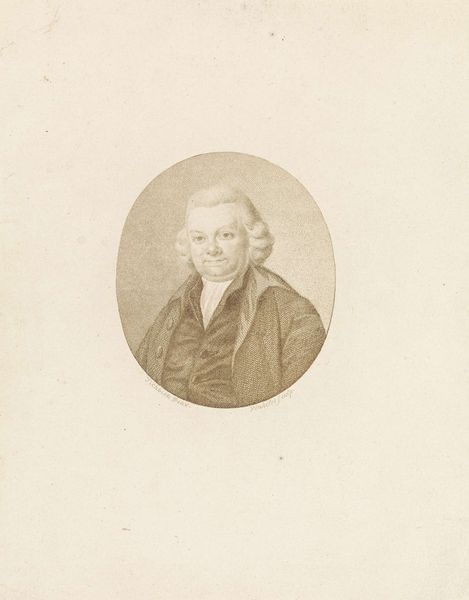
print, engraving
#
portrait
#
neoclacissism
# print
#
classical-realism
#
figuration
#
form
#
line
#
history-painting
#
academic-art
#
engraving
Dimensions: height 317 mm, width 230 mm
Copyright: Rijks Museum: Open Domain
Curator: This print is a portrait of Pietro Verri, dating roughly between 1806 and 1830, by Giuseppe Benaglia. The technique employed is engraving. Editor: My initial reaction is one of cool austerity. The subdued palette combined with the subject’s piercing gaze evokes a sense of detachment, doesn't it? Curator: It's the conventions of Neoclassicism. Let’s situate Verri in the swirling milieu of Enlightenment Milan. He was a prominent economist, philosopher and writer advocating social and political reform at a key time. The artist and the sitter collaborated in shaping this message of a learned elite. Editor: That’s a good point. The oval frame containing his bust and the fur coat denote a sense of noble isolation. Do you agree the artist draws on very conventional symbolism associated with wisdom and erudition here? Curator: Undoubtedly. Verri was at the nexus of intellectual circles, but, interestingly, also grappled with profound existential questions relating to political power, reflected in his writings. Perhaps his piercing look tries to show all this? Editor: His eyes are really remarkable, especially when one considers this is an engraving! Their penetrating intensity contributes significantly to the work's aura. It also carries certain echoes of Roman portraiture. Do you think he looks Italian? Curator: Well, that’s hard to say, but considering Verri's dedication to social reforms, I think the portrait speaks about Enlightenment ideals about equality while retaining subtle signifiers of his privileged station. This tension resonates across many reform movements. Editor: I think there’s certainly a tension there, yes, as you put it. Considering that these signs can convey quite a specific position or idea of social power that transcends epochs and locales makes them really captivating to think about. Curator: Looking at this portrait has been useful. The image leaves me to consider how individual identity, status and power commingle within the theater of history and portraiture. Editor: Indeed. It’s fascinating how, after all these centuries, an engraved image, something produced through lines, can communicate so much about individual power and status. The print has really opened a world of thought here.
Comments
No comments
Be the first to comment and join the conversation on the ultimate creative platform.



